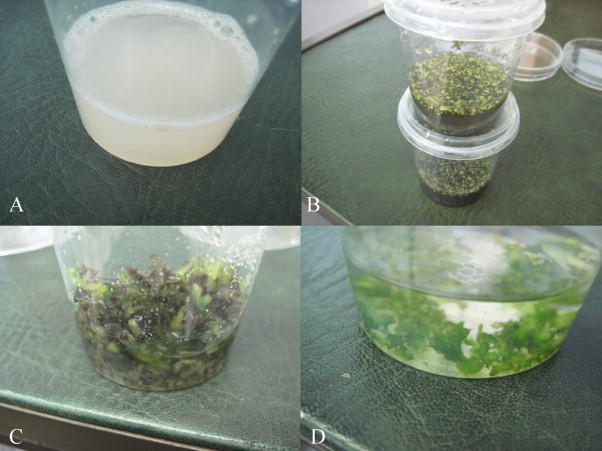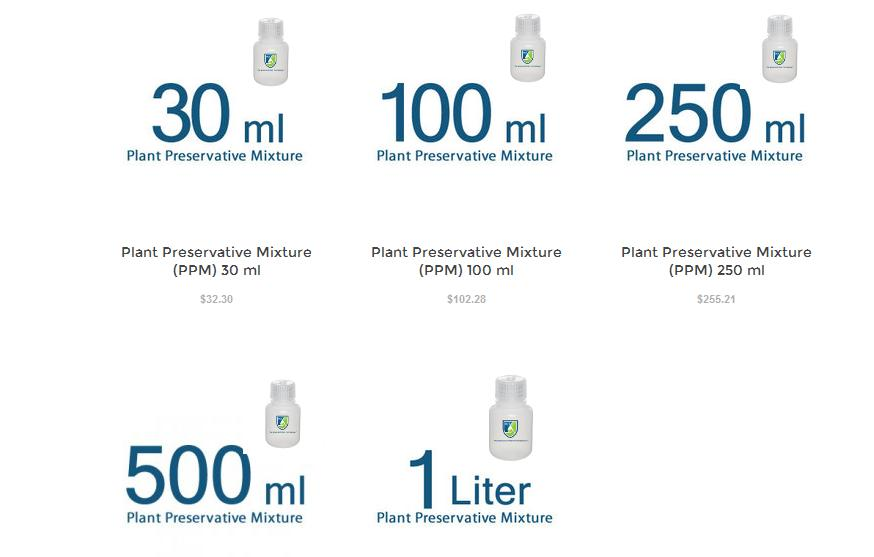
Plant Preservative Mixture (PPM) is a widely used solution in plant tissue culture and microbiology for the prevention of microbial contamination. This article provides a technical overview of PPM, outlining its composition, mode of action, applications, and considerations for use in laboratory settings.
Composition of Plant Preservative Mixture (PPM)
PPM is typically composed of several key ingredients:
- Broad-Spectrum Antimicrobials: PPM contains one or more antimicrobial agents to inhibit the growth of bacteria, fungi, and other microorganisms commonly encountered in plant tissue culture. These antimicrobials may include antibiotics such as streptomycin and gentamicin, as well as fungicides like benomyl or captan.
- Antioxidants: To prevent oxidative damage to plant tissues during culture, PPM often includes antioxidants such as citric acid or ascorbic acid. These compounds help maintain the viability and health of plant cells by scavenging reactive oxygen species (ROS) generated during tissue culture procedures.
- Surfactants: Surfactants, such as Tween 20 or Triton X-100, are added to PPM to enhance the solubility and dispersion of hydrophobic antimicrobial agents within the culture medium. They also help in wetting and penetrating plant tissues, improving the efficacy of PPM in preventing microbial contamination.
Mode of Action of PPM
PPM exerts its antimicrobial activity through multiple mechanisms:
- Disruption of Cell Membranes: Surfactants present in PPM disrupt the lipid bilayer of microbial cell membranes, leading to leakage of cellular contents and eventual cell death.
- Inhibition of Protein Synthesis: Antibiotics in PPM interfere with microbial protein synthesis by targeting ribosomal machinery or other essential cellular components, thereby inhibiting microbial growth.
- Antifungal Activity: Fungicides in PPM disrupt fungal cell walls or membranes, inhibit fungal enzyme activity, or interfere with fungal metabolism, preventing fungal growth and proliferation.

Applications of PPM
PPM finds extensive use in various applications within plant tissue culture and microbiology laboratories:
- Sterile Culture Maintenance: PPM is added to culture media to prevent contamination of plant tissue cultures by bacteria, fungi, or other microorganisms. It ensures the maintenance of sterile conditions essential for successful tissue culture experiments.
- Seed Sterilization: PPM solutions are used for surface sterilization of seeds or explants prior to initiation of tissue culture procedures. This helps eliminate microbial contaminants present on the surface of plant materials, reducing the risk of contamination during culture initiation.
- Storage and Transport: PPM can be added to storage or transport media for maintaining the viability of plant materials during storage or shipment. It prevents microbial contamination and provides protection against oxidative stress during prolonged storage periods.
Considerations for Use
When using PPM in laboratory settings, several factors should be considered:
- Concentration: The concentration of PPM in culture media or sterilization solutions should be optimized based on the specific requirements of the experiment and the susceptibility of plant tissues to antimicrobial agents.
- Compatibility: PPM components should be compatible with the plant species and tissue types being cultured to avoid phytotoxicity or adverse effects on growth and development.
- Sterility: PPM solutions should be prepared using sterile techniques to prevent contamination of culture media or plant materials. Regular monitoring of culture contamination and periodic replacement of PPM solutions are essential for maintaining sterile conditions.

Conclusion
Plant Preservative Mixture (PPM) is a valuable tool in plant tissue culture and microbiology laboratories for preventing microbial contamination and ensuring the success of experiments involving plant materials. By combining broad-spectrum antimicrobials, antioxidants, and surfactants, PPM provides effective protection against bacterial and fungal contaminants while supporting the growth and development of plant tissues in vitro. Understanding the composition, mode of action, and applications of PPM is essential for researchers and technicians working in the field of plant biotechnology and microbiology.

